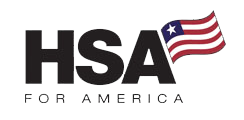
Key Takeaways
- New federal legislation allows HSA funds for DPC memberships beginning 2026 through the One Big Beautiful Bill Act.
- Monthly limits: $150 for individuals, $300 for families.
- This change makes DPC more affordable and accessible.
- Start planning now to maximize your HSA benefits.
- Don’t use HSA funds for DPC until 2026 to avoid penalties.
What This Rule Change Means
The new legislation officially recognizes Direct Primary Care as a qualified medical expense under IRS guidelines through the “One Big Beautiful Bill Act” (OBBBA).
Previously, you couldn’t use HSA funds for DPC membership fees. The IRS classified DPC memberships as insurance premiums, which aren’t HSA-eligible expenses. This created confusion for thousands of Americans who wanted to combine these two popular healthcare strategies.
Beginning January 1, 2026, the answer becomes a clear yes. The federal legislation now defines DPC as a primary care service rather than insurance.
How DPC and HSAs Work Together
Direct Primary Care offers unlimited primary care visits for one monthly fee. Most DPC practices charge $50-$100 per month for individuals and $150-$200 for families.
HSAs provide triple tax benefits: pre-tax contributions, tax-free growth, and tax-free withdrawals for qualified expenses. To qualify for an HSA, you must have a High-Deductible Health Plan (HDHP).
The new rule allows you to use HSA to pay for DPC membership fees up to monthly limits. This pairing creates an affordable healthcare strategy that maximizes your tax savings.
What You Should Do Now
Don’t use your HSA for DPC fees yet. The rule doesn’t take effect until January 1, 2026.
Here’s how to prepare:
Maximize your HSA contributions. Contribute the annual limit to grow your funds for 2026 and beyond.
Review your current setup. Ensure your HDHP and DPC membership work well together.
Talk to your DPC provider. Many providers are preparing administrative systems for HSA payments.
Why This Change Matters
This legislation reflects how Americans actually use healthcare.
DPC provides consistent, relationship-based care that many families prefer over traditional insurance models. The rule change makes DPC more financially attractive. Self-employed professionals especially benefit since they can now use pre-tax dollars for primary care.
Healthcare policy experts predict this change will accelerate DPC adoption nationwide, according to analysis from the One Big Beautiful Bill Act (H.R. 1), which was signed into law on July 4, 2025.
Compare Pricing on the Best HealthShare Plans Available
Get Ready for 2026
This rule change represents a major win for consumer-driven healthcare.
Get ready for the 2026 rule change — talk to a benefits advisor now to plan your HSA and DPC strategy. Smart planning today ensures you maximize these benefits when they become available.
For Further Reading:
Frequently Asked Questions (F.A.Q.)
Q: Can I use HSA for DPC right now?
A: No, wait until January 1, 2026 to avoid IRS penalties.
Q: What are the monthly limits?
A: $150 for individuals, $300 for families.
Q: Do I need special approval?
A: No, DPC will automatically qualify as an HSA expense in 2026.

Hi, I’m Theresa Meigs, a Personal Benefits Manager at HSA for America. My aim is to help you make smart & informed healthcare coverage decisions. I thrive on connecting with people and finding solutions that make a difference. Read more about me on my Bio page.



